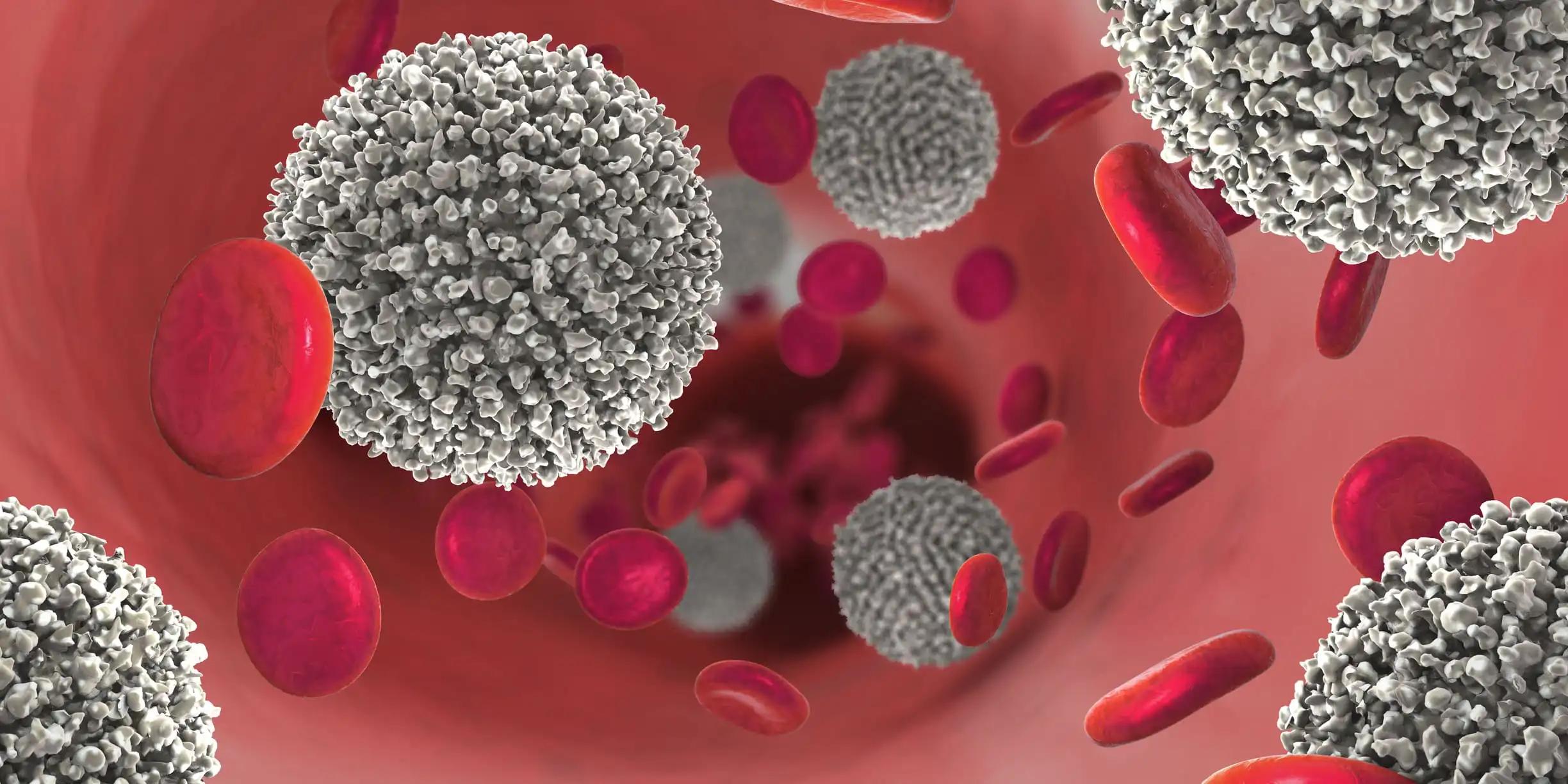KEY TAKEAWAYS
- The QuANTUM-First trial (NCT02668653) is a phase 3 study evaluating the FLT3 inhibitor, Quiz, in combination with standard chemotherapy for newly diagnosed FLT3-ITD+ AML patients.
- Quiz plus standard chemotherapy, including consolidation therapy with allo-HCT in CR1 and single-agent continuation therapy for up to 3 years, significantly improved overall survival (OS) in these patients.
- A multivariable extended Cox regression analysis revealed that Quiz treatment and allo-HCT in CR1 were favorable for OS in all randomized patients.
- A Simon-Makuch plot showed that Quiz treatment improved OS regardless of undergoing allo-HCT in CR1.
- Kaplan-Meier plot analysis revealed that Quiz improved OS, particularly in patients with pre-allo-HCT FLT3-ITD minimal residual disease (MRD+) status.
FLT3-ITD+ and FLT3 mutation-positive AML patients (pts) have a dismal prognosis. Pts with newly diagnosed FLT3-ITD+ AML were evaluated in the QuANTUM-First (NCT02668653) study, which compared the novel, highly potent, and selective type II FLT3 inhibitor, Quiz, to standard chemotherapy. Overall survival was significantly improved when Quiz was combined with standard intensive induction, consolidation (which may include allo-HCT in CR1), and single-agent continuation therapy for up to 3 years (OS). In addition, they analyzed the relationship between FLT3-ITD minimal residual disease (MRD) pre-allo-HCT and overall survival (OS) and the effect of allo-HCT in CR1 and its relationship to Quiz on clinical outcomes.
Patients (aged 18-75) who met the inclusion criteria were stratified by region, age, and white blood cell (WBC) count at diagnosis before being randomly assigned to receive either Quiz (40 mg/d) or placebo (PBO). Complete remission (CR) and CRi patients were treated with up to 4 cycles of high-dose cytarabine plus Quiz (40 mg/d) or PBO and/or allo-HCT, and then continued on Quiz (30-60 mg/d) or PBO for up to 3 years. OS was the primary metric of success. Using multivariable regression analyses, we analyzed the effect of allo-HCT on OS in CR1 as a time-dependent covariable. There was no attempt to control for multiple testing in the p-values.
After induction, 45 patients on Quiz (16.8%) and 26 patients on PBO (9.6%) reached CR in the QuANTUM-First study out of 539 patients (median age 56 years). There were 147 CR pts, 84 of whom had allo-HCT in CR1 (57.1% on Quiz and 48.7% on PBO). Among CR1 patients, the median time to allo-HCT was 3.5 months for 84 Quiz pts and 3.3 months for 73 PBO pts. Sixty-one patients (72.6%) on Quiz and thirty-six (49.3%) on PBO began three years of continuation therapy after allo-HCT. Beyond CR1, 115 allo-HCTs were carried out (Quiz, n=60; PBO, n=55). Patients were stratified by age, region, and WBC before undergoing a multivariate extended Cox regression that considered the timing of allo-HCT in CR1 and other confounding factors like FLT3-ITD variant allele frequency and gender.
The results of this study showed that both Quiz treatment and allo-HCT in CR1 improved OS (hazard ratio [HR], 0.770; 95% confidence interval [CI], 0.609-0.973; P=0.0284) and allo-HCT in CR1 improved OS (HR, 0.424; 95% CI, 0.301-0.597; P 0.0001, respectively). Analysis of the time-dependent effect of allo-HCT in CR1 on OS using a Simon-Makuch plot revealed that CR pts on Quiz had longer OS regardless of whether or not they underwent allo-HCT in CR1. On a Kaplan-Meier plot of OS in patients undergoing allo-HCT in CR1 according to the latest pre-allo-HCT FLT3-ITD MRD status (cutoff 10-4), Quiz was associated with a significantly longer OS compared to PBO, especially in patients with a pre-allo-HCT MRD+ status. Patients treated with Quiz had better OS than those treated with PBO, which was true even after accounting for allo-HCT in CR1. Regardless of pre-allo-HCT MRD status, patients on Quiz who underwent allo-HCT in CR1 had a longer OS than patients on PBO.
Source: https://tandem.confex.com/tandem/2023/meetingapp.cgi/Paper/22458
Clinical trial:https://clinicaltrials.gov/ct2/show/NCT02668653/
No DOI results



